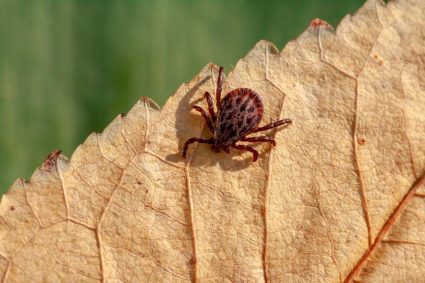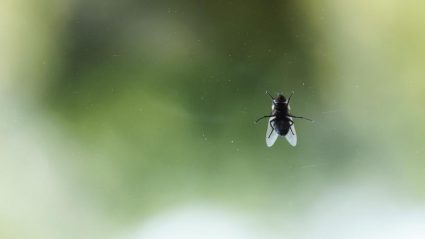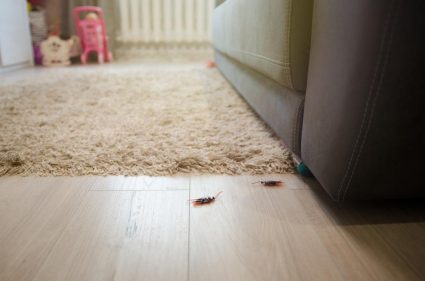
Roach infestations can be a nightmare, but even after a successful clean-out, there’s still more to do. To maintain a roach-free environment and prevent future infestations, it’s crucial to take certain steps and precautions. This comprehensive guide will detail what to do after a roach clean-out, common mistakes to avoid, and how to maintain a clean, roach-free home.
After a roach clean-out, wait for the treatment to take effect, clean up dead roaches, restrict food and water sources, monitor the treated areas, and schedule a follow-up treatment. To prevent re-infestation, maintain cleanliness, seal entrances, dry up moist areas, declutter, and use roach deterrents like diatomaceous earth or boric acid. Monitor for signs of a returning infestation, such as droppings, live or dead roaches, eggs, smear marks, shedding, chew marks, or foul odors. Avoid common mistakes like cleaning too soon after treatment, not fixing leaky pipes, leaving food out, poor household maintenance, and not sealing gaps and cracks.
Immediate Steps After a Roach Clean-Out
After a roach clean-out, you should:
- Wait for the treatment to take effect: It’s common to see dead roaches for up to two weeks after treatment. Avoid deep cleaning for at least a week to maintain the effectiveness of the pesticides.
- Vacuum dead roaches: Clean up dead bugs promptly to prevent the spread of disease.
- Clean surrounding areas: Remove easily accessible food sources to prevent roaches from moving their nest to another area in your home.
- Restrict water sources: Keep your bathtub and sinks as dry as possible, and fix any pipe or water leakage in your house.
- Monitor the treated areas: Keep an eye on the treated areas for a few days for sightings of survivors.
- Schedule a follow-up treatment: A follow-up treatment, usually scheduled 1-2 weeks after the initial clean-out, ensures 100% roach elimination.
- Maintain cleanliness and sanitation: Clean up all spilled foods and liquids, avoid leaving scraps of food on unwashed dishes and countertops overnight, and keep food in tightly sealed containers.
Preventing Roach Re-infestation
To prevent roach re-infestation, consider the following:
- Seal entrances: Close gaps around windows and doors with weatherstripping and seal up cracks with caulk to prevent roaches from entering your home.
- Maintain cleanliness: Regularly clean your floors, countertops, and kitchen appliances to eliminate food scraps and crumbs that attract roaches. Dispose of garbage regularly and use tight-fitting lids on trash cans.
- Store food in sealed containers: This prevents roaches from accessing it.
- Dry up moist areas: Repair leaks and eliminate standing water to remove potential water sources for roaches.
- Declutter: Roaches thrive in cluttered areas, so remove unnecessary items and keep your living spaces organized.
- Use diatomaceous earth or boric acid: Apply a thin layer in areas where roaches tend to hide.
- Set up glue traps: Place them along baseboards, near water pipes, and in other locations where you’ve seen roach activity.
- Monitor for roach activity: Regularly check dark and secluded areas, such as basements and attics, for signs of roach activity.
Recognizing the Signs of a Returning Infestation
Recognizing the signs of a returning roach infestation can help you act swiftly to prevent a full-blown infestation. Look out for the following signs:
- Droppings: Cockroach droppings resemble ground coffee or black pepper.
- Cockroach spotting: Seeing live or dead roaches in your home is a clear indication of an infestation.
- Eggs: Finding cockroach egg cases in your home suggests an active and growing infestation.
- Smear marks: In areas with higher moisture, roaches can leave behind red-brown or brown, irregular-shaped smear marks on surfaces and where walls meet floors.
- Shedding: Finding shed skins of living cockroaches can also indicate an infestation.
- Chew marks: Roaches often chew on household items like food containers, books, and leather goods. Unusual damage to your belongings may suggest their presence.
- Foul odors: A musty, oily smell that worsens over time can be a sign of a roach infestation.
Common Mistakes After a Roach Clean-Out
Avoid these common mistakes after a roach clean-out:
- Cleaning too soon: Cleaning immediately after pest control treatment can counteract the effectiveness of the pesticides.
- Not fixing leaky pipes: Leaky pipes create damp and dark spaces that attract roaches.
- Leaving food out: Clean kitchen counters and sinks regularly, and avoid leaving dirty dishes in the sink for extended periods.
- Poor household maintenance: Regularly checking for signs of roach infestations and including pest control in your household maintenance plan can help detect and eliminate roaches early.
- Not maintaining cleanliness: Keeping your home clean, including regularly vacuuming and disposing of garbage, can help prevent roach infestations.
- Not sealing gaps and cracks: Roaches can enter your home through small gaps and cracks. Sealing these entry points can make it harder for roaches to invade your home.
DIY Solutions to Maintain a Roach-Free Environment
There are several effective home remedies and DIY solutions to maintain a roach-free environment after a clean-out. Some of the most effective methods include:
- Boric acid: Sprinkle a small amount of boric acid powder in corners and floors where roaches are likely to come in contact with it.
- Baking soda and sugar: Mix baking soda and sugar in equal parts and sprinkle the mixture in areas where roaches are likely to hide.
- Diatomaceous earth: This natural insecticide can be used to get rid of cockroaches.
- Neem: Neem oil or powder can be used as a natural repellent for roaches.
- Essential oils: Use essential oils like peppermint oil as a natural deterrent for roaches.
- Glue strips: These are a safe and effective solution for trapping and killing roaches.
- Keep your home clean and dry: Regularly clean your home, fix any leaky pipes, and use a dehumidifier if necessary to reduce moisture.
Remember, roaches are persistent pests, and maintaining a roach-free environment requires consistency and vigilance. By following these steps, you can keep your home clean and roach-free long after a clean-out.
Frequently Asked Questions
What kind of weatherstripping should I use to seal gaps around windows and doors?
There are several types of weatherstripping available, including adhesive-backed tape, door sweeps, and V-strip (or tension seal). The choice will depend on the size and location of the gaps. It’s best to consult with a home improvement expert or your local hardware store for advice on what would work best for your specific situation.
How often should I schedule follow-up treatments after the initial roach clean-out?
This largely depends on the severity of the initial infestation. However, a general rule of thumb is to schedule a follow-up treatment 1-2 weeks after the initial clean-out. After that, regular inspections every few months can help ensure that the roaches do not return.
What are some signs that the treatment was effective?
An effective treatment will result in a noticeable decrease in live roach sightings. You may see dead roaches for up to two weeks after treatment, which is a good sign that the pesticides are working. Over time, signs of roach activity like droppings and egg cases should also decrease.
Is it safe to stay in the house during and after the roach clean-out?
During the treatment, it’s usually recommended to vacate the premises, especially for those with respiratory conditions or sensitivities to chemicals. After the treatment, you should be able to safely return once the pesticides have dried, which can take a few hours. However, always follow the instructions given by your pest control professional.
Can roaches cause harm to humans?
Yes, roaches can pose several health risks to humans. They can carry and transmit a variety of diseases, including salmonella and gastroenteritis. Additionally, their droppings, shed skins, and the chemicals they produce can trigger allergies and asthma, especially in children.
What is diatomaceous earth and how does it work against roaches?
Diatomaceous earth is a natural, non-toxic substance made from the fossilized remains of tiny aquatic organisms called diatoms. The powder works by getting into the roaches’ exoskeleton and dehydrating them to death. It’s a slow-acting but effective method of roach control.









